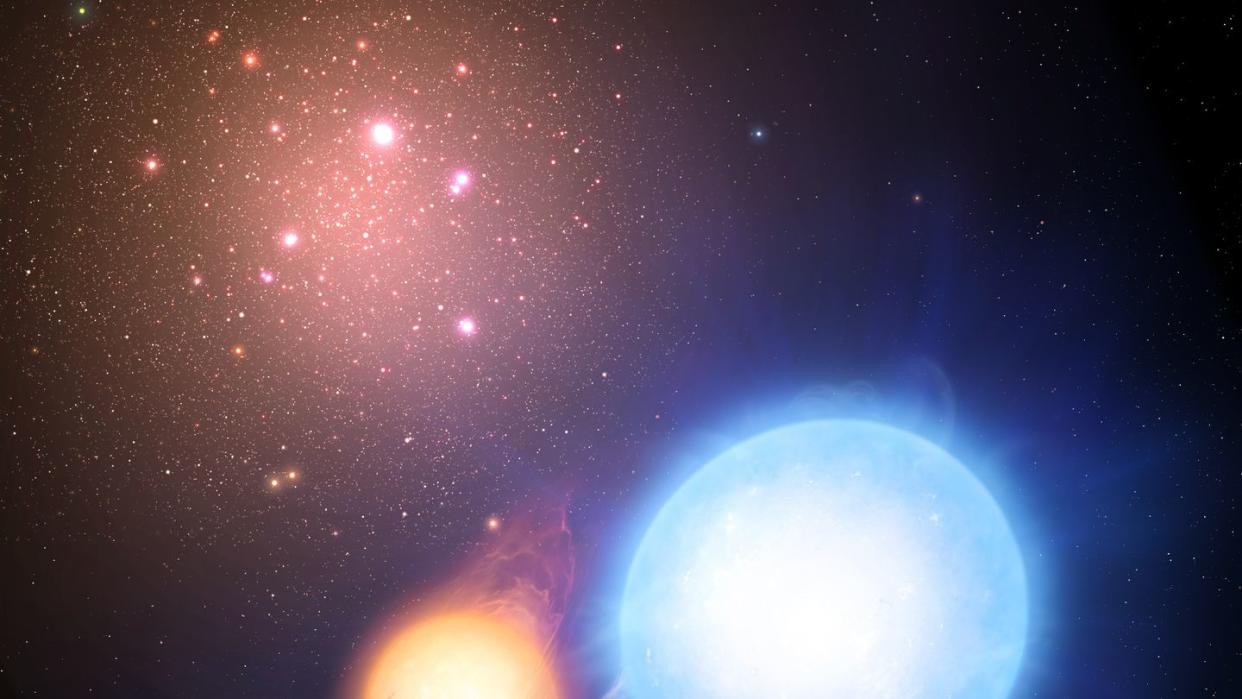A New Study Appears to Stunningly Contradict Newton and Einstein's Theory of Gravity

Einstein's Theory of General Relativity, an immensely important update to Newton's Law of Universal Gravitation, is currently our best approximation of how the universe ticks.
But there are some holes in Einstein's theory, including some gravitational weirdness around low acceleration “wide binary” stars.
A new study claims that the behavior of these slow-moving celestial objects can’t be explained by a Newton-Einstein theory, which relies on dark matter, but could be explained with an idea known as Modified Newtonian Dynamics, or MOND.
In 1687, English physicist Isaac Newton published his famous Law of Universal Gravitation. The idea that all objects attract in proportion to their mass was a revolutionary idea that became a huge boon for understanding the ways of the universe. But even Newton’s influential work had its limitations—specifically, it couldn’t explain gravitational phenomena such as black holes and gravitational waves. Thankfully, Albert Einstein came around in the early 20th century to help patch things up a bit with his Theory of General Relativity.
But space is a big place, and even Einsteins sometimes meet their limit. One of the most well-known of these limits is a black hole’s center, or singularity, where Einstein’s famous theory appears to break down completely. Now, a new study from scientists at South Korea’s Sejong University suggests that another limit to Newton and Einstein’s conception of gravity can be found in the orbital motions of long-period, widely separated, binary stars—also known simply as “wide binaries.” The results of this study were published this month in The Astrophysical Journal.
After analyzing 26,500 wide binaries within 650 lightyears captured by the European Space Agency’s Gaia space observatory, co-author Kyu-Hyun Chae discovered something strange—when these celestial objects achieved extremely low orbital accelerations around 0.1 nanometers per second squared, the observed accelerations were nearly 30 to 40 percent higher than Newton-Einstein models would predict. However, if these accelerations were above 10 nanometers per second squared, they followed the Newton-Einstein theory as predicted. Something weird is happening specifically at these ultra-low accelerations.
In the standard model of gravity, this is where concepts of dark matter become vitally important. Because scientists don’t know anything about this hypothetical form of matter and energy that supposedly makes up a majority of the universe, it’s possible that dark matter is influencing this strange gravitational interaction. However, Chae argues that Modified Newtonian Dynamics, or MOND—first proposed by Israeli scientist Mordehai Milgrom in 1983—could explain (among other galactic anomalies) these low acceleration deviations.
The most surprising element is that a MOND-influenced theory of gravity—also co-authored by Milgrom—explains this unexpected 1.4 times acceleration boost. This theory is called a A Quadratic Lagrangian, or AQUAL, and Chae says his work “represents a direct evidence for the breakdown of standard gravity at weak acceleration.”
“This systematic deviation agrees with the boost factor that the AQUAL theory predicts for kinematic accelerations in circular orbits under the Galactic external field,” Chae says in the paper.
Similar to how the Newton-Einstein theory relies on the ever-elusive particle known as dark matter, MOND contains its own limitations and challenges. Chae’s study appears to be a big +1 in the pro column for Modified Newtonian Dynamics, but the theory is still just that—a theory. It will need much more observational support before it upends our modern understanding of gravity and the universe we inhabit.
You Might Also Like
